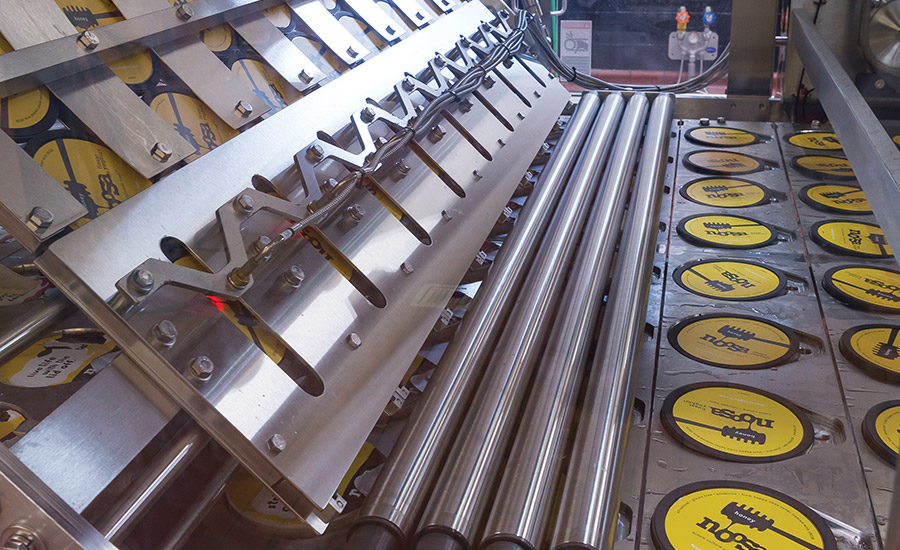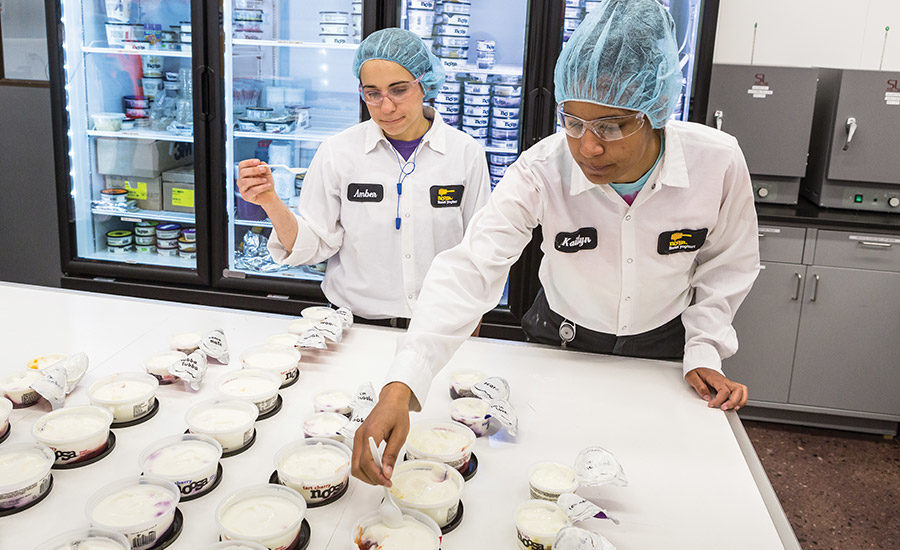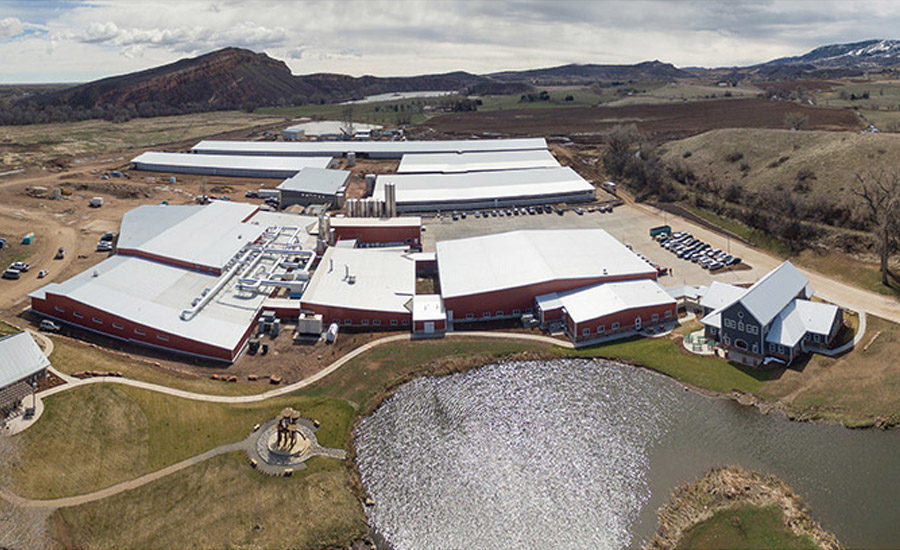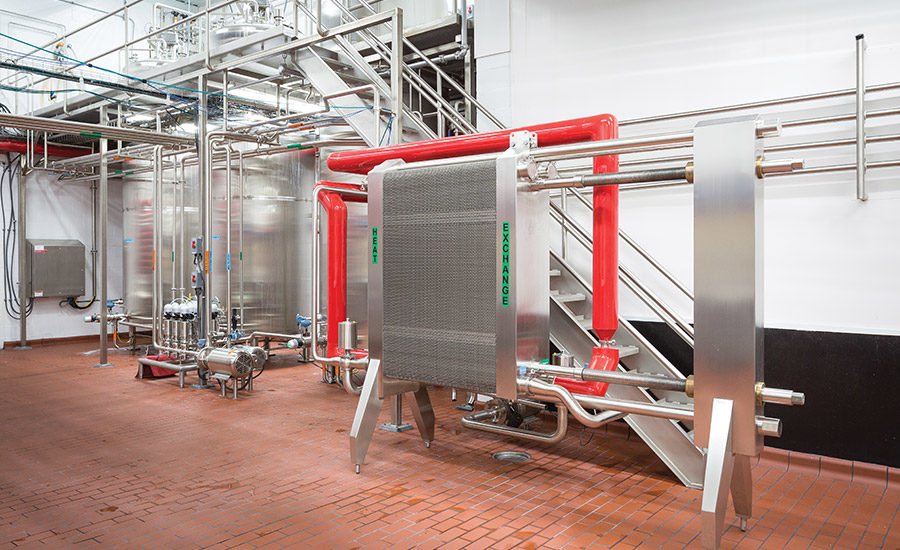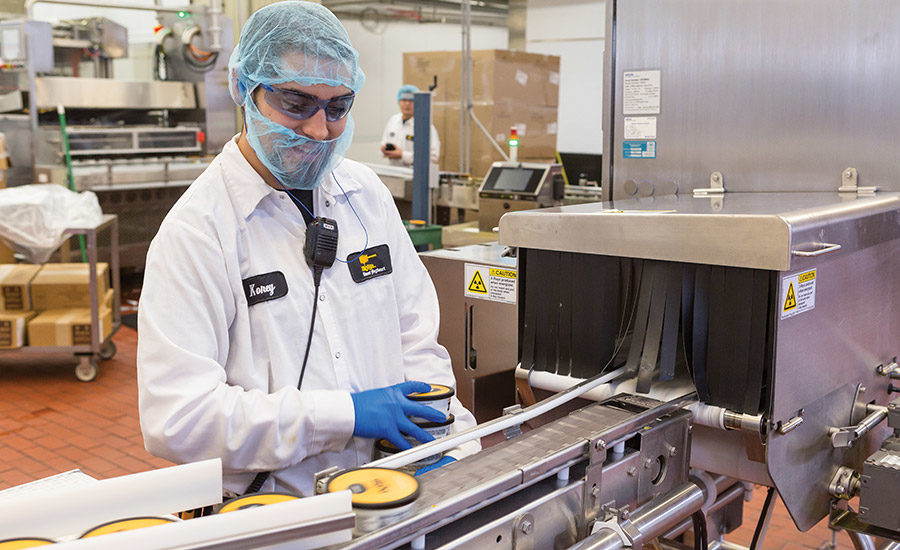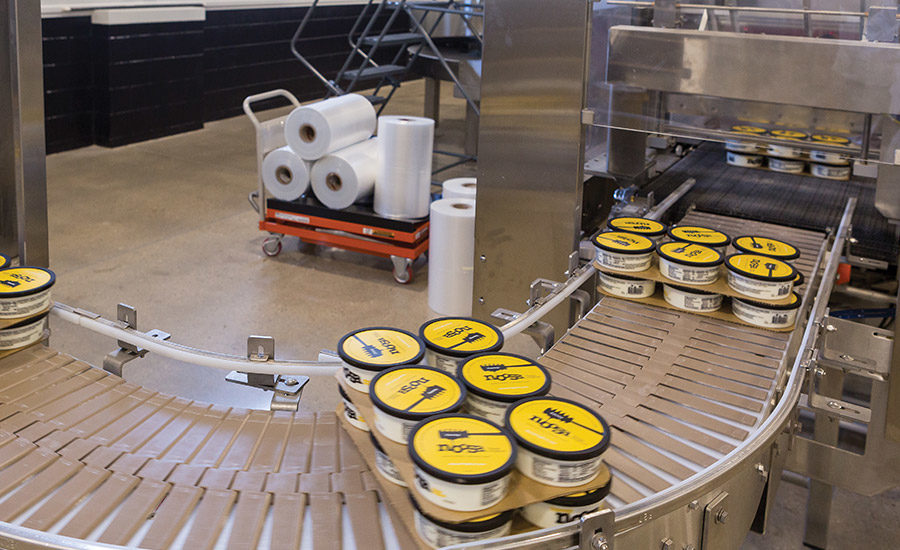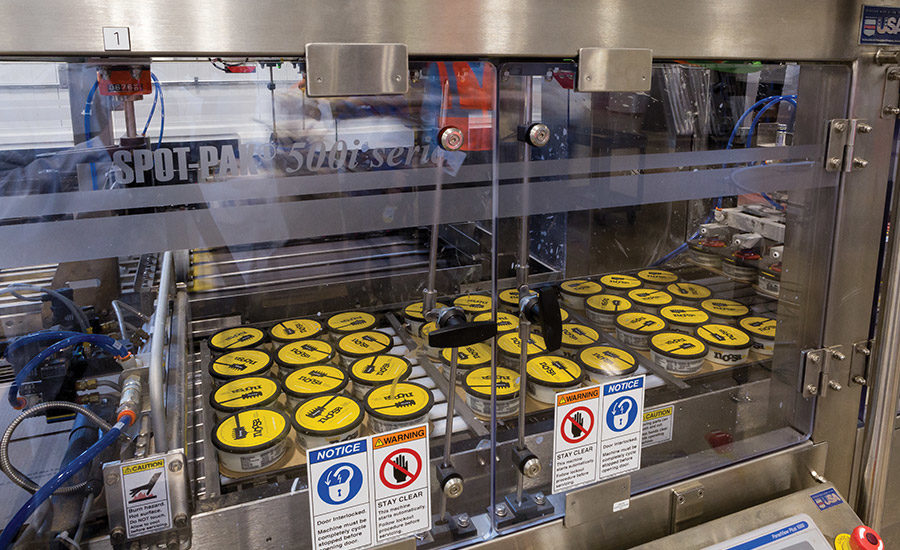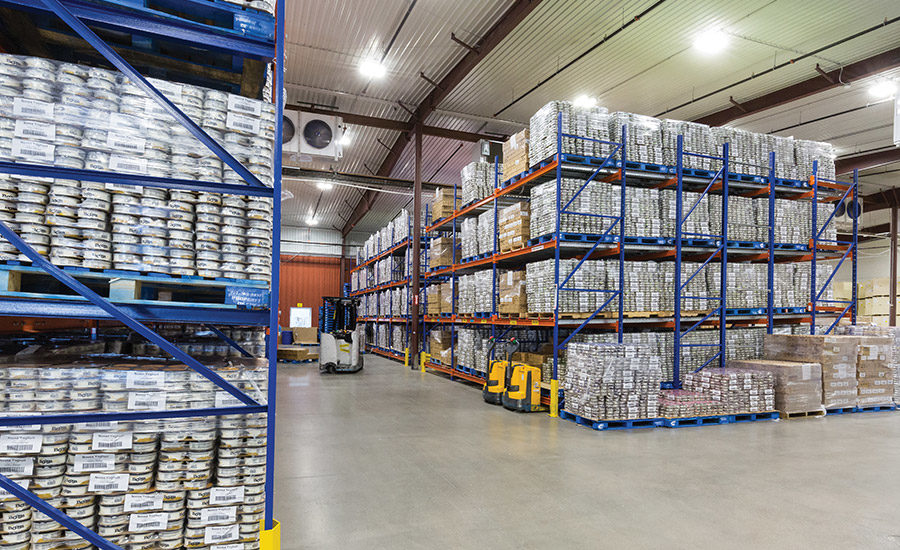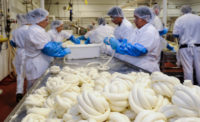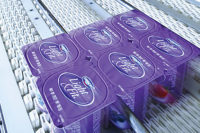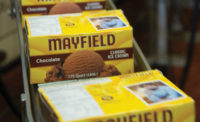Rob Graves is a dairy farmer and dairy processor who owns Morning Fresh Dairy in Bellvue, Colo. He sells his white and flavored milks up and down the front range of Colorado’s Rocky Mountains. Business was good for the fourth-generation farmer. Demand was growing from home delivery customers, restaurants and Whole Foods. Graves had plans to expand the milk processing plant. That is, until yogurt got in the way.
Enter Koel Thomae. She had just acquired a yogurt recipe from an Australian dairy processor and was looking for someone to make it in the United States. (See related article.) She found Graves and together the two of them started noosa yoghurt (the company prefers lowercase letters).
Self-taught yogurt maker
Graves had made cheeses but he had to teach himself how to make yogurt. He said he learned something from every batch he made, and he improved and refined the technique. When he ran into a road block, he’d call equipment suppliers to resolve manufacturing issues like shearing, and call ingredient suppliers to hash out solutions to issues like Brix levels, for example.
At first, Graves made the yogurt in 200-gallon batches and packed it in 5-gallon buckets. Graves made fruit purees on the stove in his house. The yogurt truly was handmade. As the business grew, Graves and Thomae added equipment and expanded the plant. But they proceeded carefully, learning from their experiences. They wanted to maintain the consistency and the flavor of the yogurt.
“[We learned] from our previous plants how to make things better,” Graves said. But scaling up from small batches to larger ones can mean, “you lose some of the special thing you had. It’s bigger equipment, bigger tanks. But we still have to keep the same yogurt.”
Graves oversaw the various expansions to the yogurt plant which he calls 2.0, 3.0 and 4.0. He supervised the expansions and installed the processing equipment.
“I would challenge anyone in the dairy industry to build a plant faster than Rob Graves, in a quality way,” Thomae said.
Graves shrugs it off. “I get to play engineer all the time. But it worked to where I think we’re making the best yogurt now that we’ve ever made. We’re consistent. Before, it’s small batches. And they were great. But there were always some that were great, and others just good,” he said.
Now, the texture, the flavor and the balance between the sweet and tart are consistently the same, batch after batch, he said.
“The balance between the sweet and the tart [is] one of the things that we work really hard at to keep that balance,” Graves said. Thomae added, “And it makes us unique, too. Almost like a wine; more complexity in the flavor profile.”
Milk as ‘local’ as it gets
The Graves family has been dairy farming in and around Bellvue for four generations. Rob Graves knows all the farmers. He uses milk from his Holsteins in the fluid milk and yogurt products. As the yogurt business grew, Graves turned to Dairy Farmers of America to supplement his milk supply. Noosa uses 100% Colorado milk and it is all sourced within 40 miles of the plant.
The freshness is “absolutely key to the quality of the product,” Thomae said.
Milk is a cyclical and seasonal product, Graves explained. Cows produce milk with different protein levels and different solids depending on the season. Every dairy processor is making adjustments to standardize the milk so the taste is consistent throughout the year.
The first tankers arrive at 6:30 a.m. and the last delivery is between 5 p.m. and 7 p.m. Noosa receives four or five loads every day of the week. Milk from Graves’ dairy farm is pumped directly to the plant from the milking parlor next door. Cows are milked on a carousel three times a day.
At many of the dairy processing plants that Dairy Foods visits, drivers wait while the milk is being tested. Then they unload, clean the tankers and go back on the road. The entire process can take from 60 to 90 minutes.
Not so at noosa. Drivers drop their tankers. Noosa will off-load the milk and clean and sanitize the trailers on its schedule. When a driver returns to drop a second tanker, he drives away with a cleaned unit.
“It’s super-efficient for both of us,” Graves said. “That way we don’t have to unload it right away, so we can do our testing.”
The receiving area uses a scale and a flow meter, and the milk is stored in three raw milk silos.
“For every process, we try and verify what we’re doing with two metrics,” Graves said. “This is our new automation system for plant 4.0,” he said, pointing to the human-machine interface panel in the receiving area. “All through the process, you’ve got to use that same logic. We’re doing this procedure, let’s check and then let’s double check. The computer, if it sees something out of line, it’ll pause everything and alert the operator. The operator comes in and checks and figures it out.”
Processing and packaging
In the processing room, the milk is condensed by passing through a series of reverse-osmosis filters. It then flows into stainless steel tanks mixed with other ingredients. Then the milk is pasteurized in a high-temperature/short-time unit and pumped to set tanks in the culturing room. There are four tanks (with room for more, when needed). Yogurt cultures are added. The tanks hold the milk for several hours. Then samples are taken to the lab to be analyzed. If the pH, viscosity, flavor, odor and other factors meet the targets, the yogurt flows to the fillers in the packaging room.
Because the tanks are narrow and vertical, they provide a wide surface area ratio, which treats the milk more gently compared to a typical tank that is more squat, Graves said.
At the fillers, yogurt is injected into 8-ounce cups or 4-ounce multipacks. A heat-stamped foil lid is applied, then an overlid is added. The filled packages pass by a printer that ink-jets a code with plant information and dates. They are conveyed across a checkweigher and through an X-ray machine to the casing room. Then packages are bundled into cases and stored in an on-site warehouse. Once the yogurt clears quality control, pallets are loaded onto trucks bound for a distribution center. Or, customers arrive to pick up their own orders.
Lab tests all day long
In the on-site lab, technicians arrange samples by batch number. They are testing how the packages have performed as the batch proceeds throughout the day. There is an initial viscosity test from the beginning of the batch. A second viscosity test, taken during a sensory evaluation, shows how the yogurt has set up after 18 hours. The answer provides a clue on how the yogurt will set up in the long run. After 45 days (the recommended shelf life), the yogurts will be tested again and the lab evaluates their appearance. Noosa maintains all the data in a log, and information from every batch it has made is stored there.
Every day there are taste tests. In addition to the lab technicians, all employees in the company are welcome to come to the lab and have a sample. Graves, though, doesn’t wait. He already has had a taste first thing in the morning, he said.
“I believe in going out on the line every morning and trying to go get yogurt off the line, and talking to the guys.”
Later in the day, he’ll try to taste in the afternoon but “definitely” has a taste in the evening before he goes home. “That’s the last thing I do before I walk through the plant.”
Involving the entire quality team (which includes marketing) in the daily tasting sessions is part of the company ethos, Thomae said. “I think that’s what also makes us unique. Having this ethos that flows through the plant out to the end-consumer and making sure that everyone that is involved in making, whether it’s on the consumer side or the plant side, has that commitment to quality.”
Early on, during a taste test, Graves noticed something was off with the yogurt. Working backwards through storage, culturing, milk processing and receiving, Graves determined that the plant had received a mixed load. The tanker had picked up milk produced by Holsteins and another breed. Since then, drivers deliver loads of 100% Holstein milk.
CIP room
Graves has two clean-in-place systems. One is dedicated to raw product and the other to pasteurized product.
“There’s no way they could ever mix,” Graves said. “That was always a fear, especially when you’re reclaiming water, that you could reclaim something from the raw side that would contaminate something on the pasteurized. On the new system, it’s impossible. There are no pipes connected. They are two separate CIP systems. I sleep better at night with that.”
Reclaimed water is used for cleaning in the plant. Graves also wanted to get the plant completely off the grid. He had plans for solar panels to generate electricity and a digester on site to process food waste. But the plant has grown so large that it has reached the limit of its solar capacity (500KVA).
“That’s a lot of power,” Graves noted, but the plant needs more than that.
A team approach
Noosa has about 150 employees, with 120 in manufacturing. Graves and Thomae have instilled a team approach to making yogurt. “Everybody that works here has a real can-do attitude. Nobody ever says ‘It’s not my job,’” Graves said.
Graves has quite a few job experiences under his belt. He grew up in the dairy business but studied finance, not agriculture, in college. For a while, he traded commodities at the Chicago Board of Trade. Then he moved back to the family farm in Colorado. Being a dairy processor allows him to tinker with equipment and processes, which he clearly loves to do. Several times during our conversation, Graves said “I love playing an engineer all day.”
A son, who is also an engineer, works in the plant. Another son and a daughter are in college. All the children have worked in the plant in summers or on school breaks. In the early days, noosa was hand-taping corrugated boxes.
“It was all hands on deck, and Rob’s kids were definitely there,” Thomae said. “I remember shipping out our first cases to Whole Foods and Trevor (Grave’s younger son) was drawing dragons on one of the boxes. I was like, “You can’t do that! That’s going to a commercial customer!”
Quality control is absolutely critical. Thomae talked about when noosa expanded East in 2011. The shelf life wasn’t great and logistics broke down. There was no customer support.
“We sort of got too far afield,” she recalled. “We ended up pulling back and really sort of sitting down and going, ‘Okay, we need to have a better strategy.’”
As noosa adds customers, production has to increase. I asked Thomae and Graves if they ever considered using a co-packer to pick up the extra demand. Both rejected that idea. “That’s a different beast,” she said.
Thomae said she often is asked what would she would do differently if she could start over.
“I think, both of us would agree, that we would have built a bigger plant from Day One,” she said.
One value from Day One that continues is noosa’s commitment to quality. A poster in a conference room in Bellvue states: “We will make great yoghurt. At a profit if we can, at a loss if we must, but always great yoghurt.”
Photos by Paul Wedlake Photography
